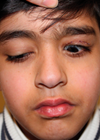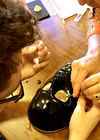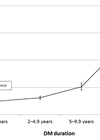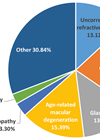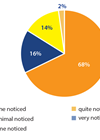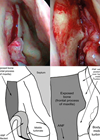Ophthalmology archive for 2018
Paediatric ptosis
Manoj Parulekar and colleagues provide a comprehensive overview of the diagnosis, assessment and management of childhood ptosis. Blepharoptosis (commonly referred to as ptosis – Greek, πτῶσις, ‘to fall’) is a condition where the upper eyelid is in an abnormally low...
Simulated intravitreal injection training – the way forward
Simulated surgical training is now recommended in the training curricula of all ophthalmologists in the United Kingdom [1]. Simulated training allows for familiarisation with a procedure, exercises the discipline of repetition, allows the resolution of technical difficulties and enables refinement...
Eye disease patients have more opportunity than ever to take part in NHS research studies
A new report highlights how 76% of UK hospitals now offer patients the opportunity to take part in studies of eye disease to improve research and innovation. ‘Ophthalmology research in the UK’s National Health Service: the structure and performance of...
Rare eye diseases: progress continues with authorised orphan medicines and breakthrough technologies
An update on the development of orphan medicines, recent regulatory treatment approvals for rare eye conditions and advances in retinal prosthetic technologies for blinding diseases. The prevalence of a rare disease is based usually on a range of estimates and...
Cataract incidence rates in patients from the UK suffering with diabetes mellitus
The authors summarise the main findings from a recent study which investigated the incidence rates of cataract in patients with or without diabetes mellitus (DM). Background to the study Worldwide, the World Health Organization (WHO) estimates that 253 million people...
A short survey of the views of clinicians on the role of procedure-specific consent forms
Informed consent is an ethical and legal right of every patient [1]. It is essential that patients receive clear, concise and accurate information regarding the risks, benefits and alternatives to a potential intervention. In addition to this, the patient must...
Fight for Sight to maximise impact by funding solutions-focused research in priority eye conditions
Fight for Sight aims to stop sight loss by funding pioneering research. Rod McNeil takes a look at the Primer Fellowship Awards programme, which provides funding for up to £60,000 for individuals to undertake vision-related research for one year. Among...
Isolated trochlear (fourth cranial) nerve palsy in an Asian population
The authors report on 35 consecutive new cases of isolated fourth cranial nerve palsy seen over a period of six months in one neuro-ophthalmology clinic in Southeast Asia, with emphasis on their aetiology and management. We report on 35 patients...
Introduction of the Mydriasert insert at the Manchester Royal Eye Hospital
The authors report on a study to examine the effects of the Mydriasert insert on time, effects, patient comfort and tolerability at Manchester Royal Eye Hospital. Mydriasert is an insoluble ophthalmic insert indicated for mydriasis prior to ophthalmic surgery, which...
My experience of the transition into a specialist orthoptist role
Michelle Dent discusses the process of transitioning into a new role and the pros and cons along the way. An opportunity arose for a permanent, full time, band 7 specialist role in the medical retina (MR) team in the Newcastle...
The creation of PlayDoh® models as an educational tool for teaching anatomy of the eyelid
An understanding of the anatomy of the eyelid is essential for training in oculoplastic surgery. Active learning has been shown to increase knowledge and retention and has an advantage over passive teaching methods alone [1,2]. PlayDoh® models have been used...
Developments in oculoplastic surgery
A study of NHS practice demonstrated significant patient-reported quality-of-life improvements from commonly performed oculoplastic operations: entropion repair, ectropion repair, ptosis repair and dacrocystorhinostomy (DCR) [1]. In recent years, surgical and non-surgical approaches to functional and aesthetic oculoplastic surgery have advanced...


